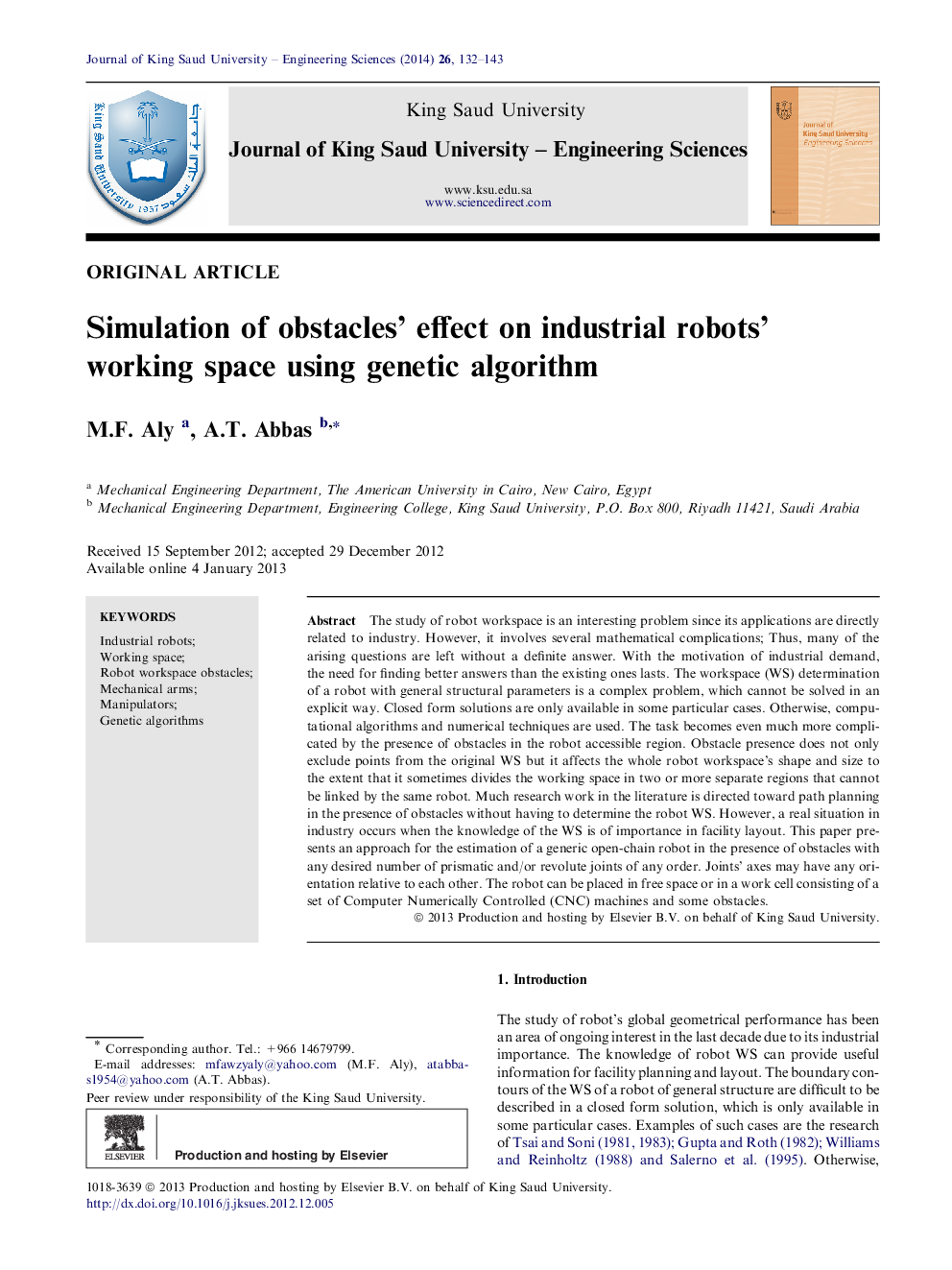| Article ID | Journal | Published Year | Pages | File Type |
|---|---|---|---|---|
| 827148 | Journal of King Saud University - Engineering Sciences | 2014 | 12 Pages |
The study of robot workspace is an interesting problem since its applications are directly related to industry. However, it involves several mathematical complications; Thus, many of the arising questions are left without a definite answer. With the motivation of industrial demand, the need for finding better answers than the existing ones lasts. The workspace (WS) determination of a robot with general structural parameters is a complex problem, which cannot be solved in an explicit way. Closed form solutions are only available in some particular cases. Otherwise, computational algorithms and numerical techniques are used. The task becomes even much more complicated by the presence of obstacles in the robot accessible region. Obstacle presence does not only exclude points from the original WS but it affects the whole robot workspace’s shape and size to the extent that it sometimes divides the working space in two or more separate regions that cannot be linked by the same robot. Much research work in the literature is directed toward path planning in the presence of obstacles without having to determine the robot WS. However, a real situation in industry occurs when the knowledge of the WS is of importance in facility layout. This paper presents an approach for the estimation of a generic open-chain robot in the presence of obstacles with any desired number of prismatic and/or revolute joints of any order. Joints’ axes may have any orientation relative to each other. The robot can be placed in free space or in a work cell consisting of a set of Computer Numerically Controlled (CNC) machines and some obstacles.
